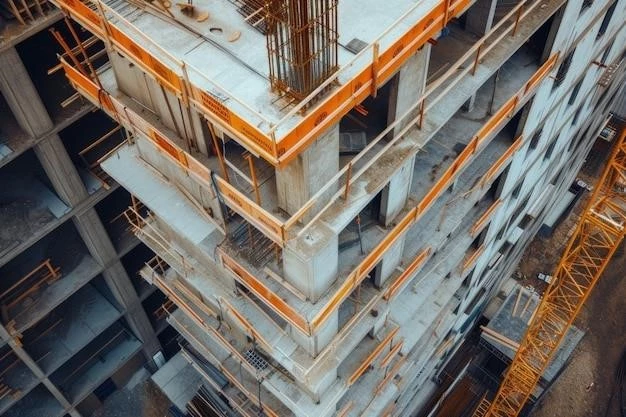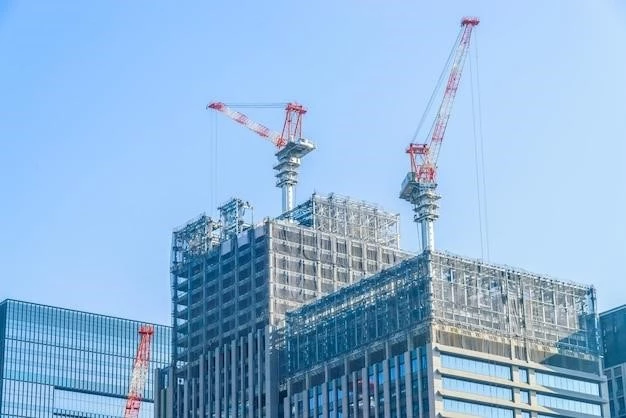Skyscrapers, towering monuments to human ingenuity and ambition, have continuously pushed the boundaries of architectural and engineering possibilities. Over the past century, advancements in construction techniques and materials have enabled the creation of structures that reach unprecedented heights and complexities. This article will delve into some of the most significant advancements in skyscraper construction, exploring the innovations that have shaped the modern urban landscape.
Structural Systems
The foundation of any skyscraper lies in its structural system, which must be strong enough to withstand the immense weight and forces acting upon it. Traditional steel frame construction, widely used in the early 20th century, has been refined and complemented by new technologies:
- High-Strength Steel: The development of high-strength steel alloys has enabled the construction of taller and lighter structures. These steels possess greater yield strength and tensile strength, allowing for thinner beams and columns while maintaining structural integrity.
- Composite Materials: Composite materials, such as reinforced concrete and fiberglass-reinforced polymers, have gained popularity in skyscraper construction. They offer a combination of strength, durability, and flexibility, making them suitable for various structural elements.
- Lightweight Concrete: The use of lightweight concrete, such as aerated concrete, has significantly reduced the overall weight of structures, easing the load on foundations and reducing material costs.
- Precast Concrete: Precast concrete elements, manufactured off-site, have revolutionized the construction process. These elements are transported to the site and assembled quickly, reducing on-site labor and construction time.
Foundation Systems
A robust foundation is essential for supporting the weight of a skyscraper and transferring it to the ground. Advancements in foundation engineering have enabled the construction of skyscrapers on challenging sites:
- Pile Foundations: Pile foundations, consisting of long, slender columns driven deep into the ground, are widely used for supporting skyscrapers on soft or unstable soils. They transfer the load to deeper, more stable layers of soil.
- Caissons: Caissons are large, hollow cylinders that are sunk into the ground and filled with concrete. They provide a solid foundation for skyscrapers on waterfronts or areas with challenging soil conditions.
- Floating Foundations: Floating foundations are used when the ground is too soft or unstable to support traditional foundations. These foundations are essentially large platforms that rest on the water or on a layer of compacted soil.

Building Envelope Systems
The building envelope, the outer shell of a skyscraper, plays a crucial role in protecting the interior from the elements and providing insulation. Advances in materials and design have led to more efficient and sustainable envelope systems:
- High-Performance Glazing: High-performance glazing, such as double- or triple-paned windows, offers excellent thermal insulation and reduces energy consumption. These windows can also incorporate advanced features like self-cleaning coatings and solar control films.
- Lightweight Cladding: Lightweight cladding materials, such as aluminum panels and fiberglass-reinforced panels, have reduced the weight of the building envelope, improving energy efficiency and reducing the structural load.
- Green Building Techniques: Green building techniques, such as using recycled materials, incorporating solar panels, and optimizing building orientation, have become increasingly common in skyscraper construction. These techniques promote sustainability and reduce the environmental impact of buildings.
Construction Techniques
Construction techniques have also evolved significantly, enabling the efficient and safe construction of skyscrapers:
- Modular Construction: Modular construction involves prefabricating building components off-site and assembling them on the site. This method reduces construction time, minimizes waste, and improves quality control.
- Crane Technology: Advancements in crane technology, including the development of larger and more powerful cranes, have enabled the lifting of heavier and more complex building components.
- 3D Printing: 3D printing technology has the potential to revolutionize skyscraper construction by enabling the rapid creation of complex and customized components. This technology is still in its early stages of development, but it holds significant promise for the future.

Conclusion
Advancements in skyscraper construction have enabled the creation of structures that push the boundaries of human ingenuity and ambition. From structural systems to foundation systems, building envelope technologies, and construction techniques, innovations have played a crucial role in shaping the modern urban landscape. As technology continues to advance, we can expect to see even more impressive and sustainable skyscrapers in the future.










